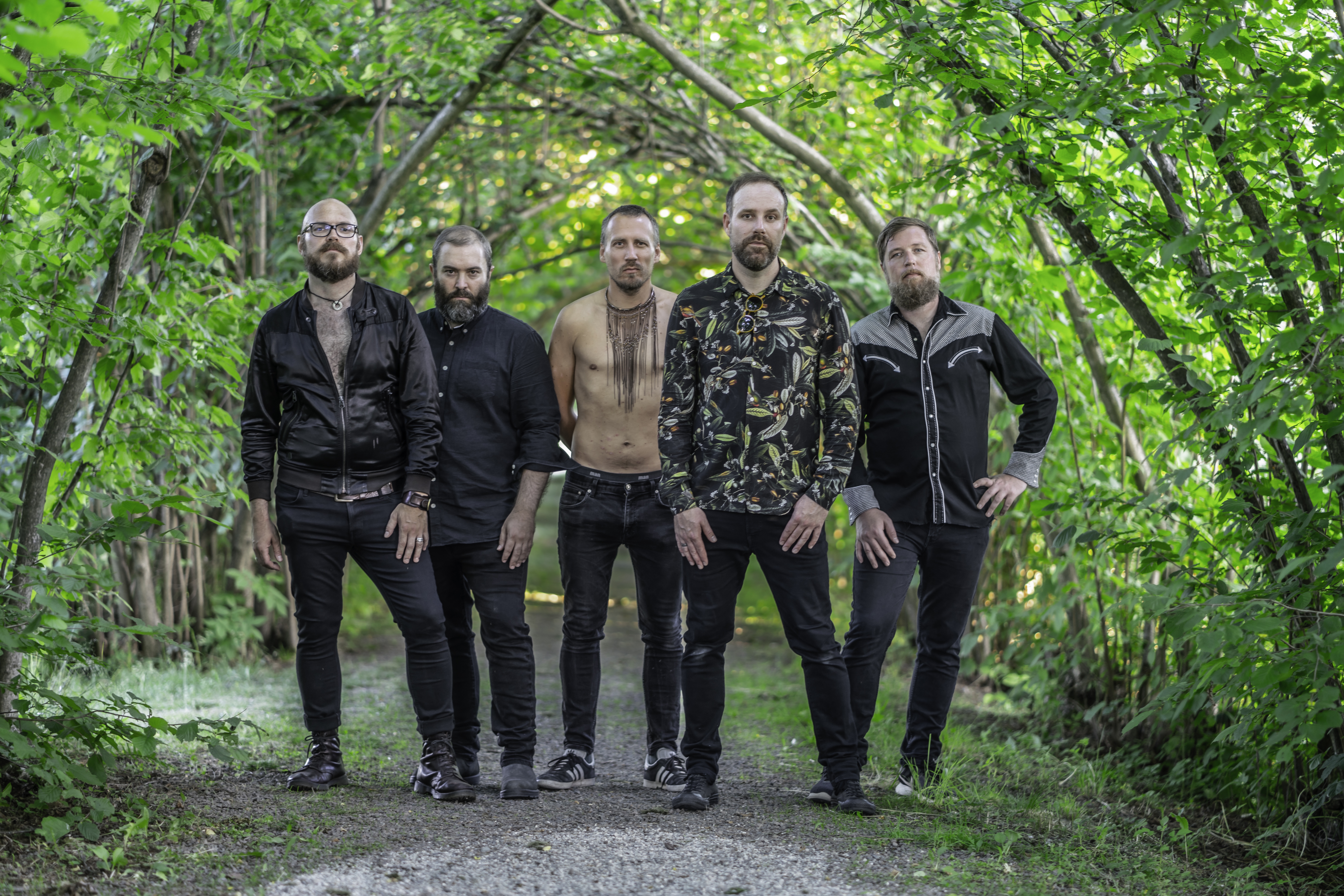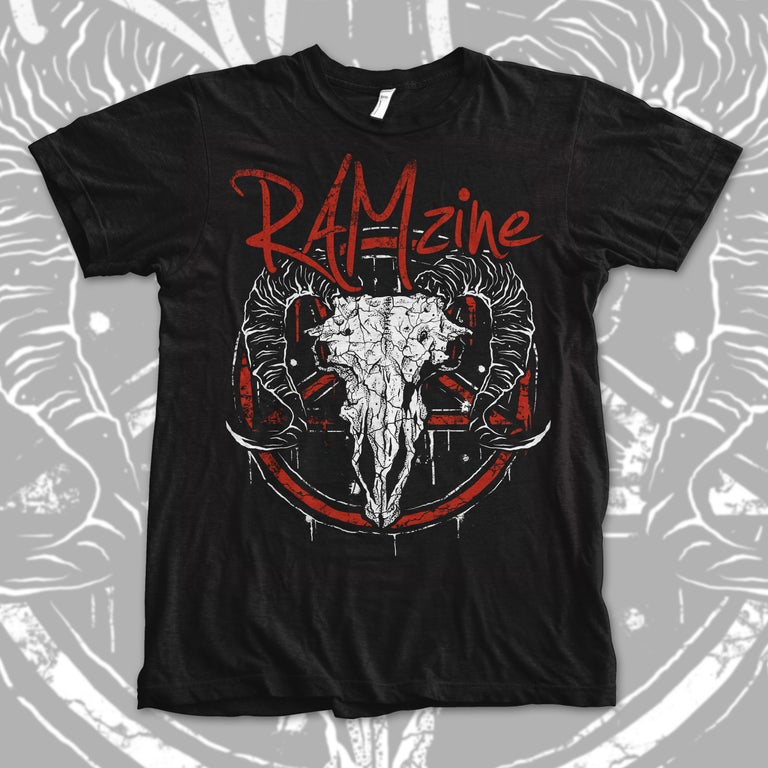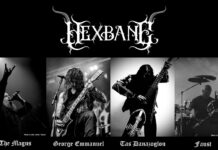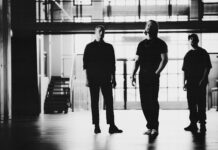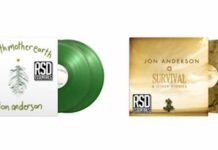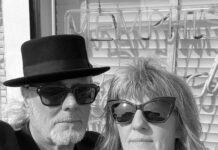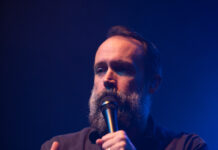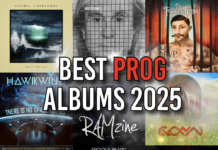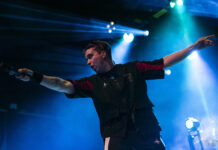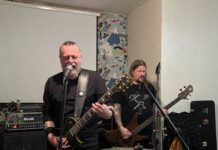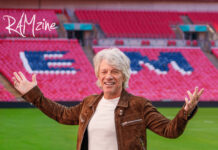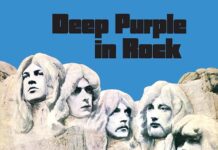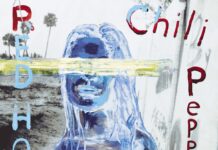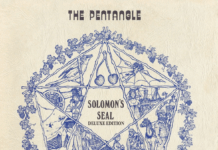Earlier on this year, the first three records by Norwegian prog rockers Wobbler were re-issued by the ever-reliable Karisma Records, more specifically Hinterland, Afterglow and Rites at Dawn. On top of that, a lavish-looking and exclusive vinyl box set containing the aforementioned musical gems plus other goodies saw the light of day to much praise and compliments from devotees of the band. Simply titled Wobbler I-III, this is a must-have for fans of these talented gentlemen and their unique take on the prog genre, and the beautiful presentation of said vinyl box is just to die for. We simply had to conduct a mammoth interview with them to uncover all aspects of those inspired early years and outputs. Grab a coffee or a beer, dig out a copy of your favourite Wobbler LP and put that on the turntable, lean back in that cosy chair of yours and immerse yourself in the following pages.
How did Wobbler come into being, and when exactly did you guys get together for the first time to rehearse? Did you immediately start toying around with your own ideas and songs, or did you by any chance do some covers at first just to get the hang of playing together and finding out whether there was any chemistry there or not?
Lars: After “Morten, Frøydis & Photosynthesia”, which was a short-lived band where we played one song at Ungdommens Kulturmønstring in 1998, we ended up with a new bassist, Kristian, in 1999 and could have called ourselves “Morten, Kristian & Photosynthesia”. We landed on the name Wobbler, and then Tony came into the picture maybe around the same time or shortly after, I believe.
Kristian: Wobbler is a result of two local bands coming together to play music in the vein of groups we all were fans of. Originally, we were separated into two camps/areas. Morten and I in Hole about 1 kilometre on one side of the local town, Hønefoss, and Lars and Martin on the other side. The two camps each had their own bands; Oter (Otter) in which Morten and I played guitar and bass and The Big Huggy Bug Bear Band in which Lars and Martin played keyboard and drums. Other than me and Morten, Oter consisted of Marius (now guitarist in Wobbler) on drums. The band was the result of an even earlier band’s demise, namely a rock band called Citadel. Tony, Wobbler’s first vocalist, was also in Citadel. I vividly remember when I was drafted into Wobbler. Picture a rural farm setting with chairs drawn out on the patio. Morten told me that Lars had told him about his yearning for an experimental, all-in progressive rock band akin to the giants we all were fans of. Morten, the sneaky bastard, said that Lars wanted him on guitar, Martin on drums and that he wondered if Morten could come up with a vocalist. No mention of a bass player. As I recall, Morten even came up with another local bassist as a suggestion to me. Well, I managed to force myself in anyway. So, no try-outs, no cover songs. Just the prospect of playing complex self-made music. I really can’t remember the date of our first rehearsal. As for chemistry, we didn’t have any other musicians in the area that were suitable, so we were basically stuck with each other. In hindsight, I think all involved knew that no one else would be a fit. At that time, Marius wasn’t really into prog, or rather; he was more interested in modern bands. Besides, guitar has always been his first instrument. I don’t think he would’ve enjoyed the role as drummer in a progressive rock band. Also, two guitarists were out of the question with Lars on keyboards anyway.
Martin: As I remember the narrative, Lars and I wanted to play progressive rock and made rough sketches of a couple of songs. Then we contacted other people to try out the material. Eventually, Morten, Kristian and Tony came along, and we started the experiment called Wobbler. No covers!
Do any of you recall what that very first session was like and what impressions you were left with?
Lars: The actual first rehearsal is rather blurry for me since all of us had played together before in various bands. I do remember that this was supposed to be full-blown old school symphonic prog rock and so we fumbled around. Martin and I had a background in 60s psychedelic rock, and I always thought we were born 30 years too late. In 1996, we played the style of music that was popular in 1966 and then we progressed from there.
Kristian: I think we just talked for a long while about the whole concept for the band, really. Maybe we played some music as well, but I can’t recall what. If anything, some motifs and riffs from what would later become ‘In Taberna’ and ‘Imperial Winter White’ that Lars already had more or less ready for the band treatment, would be my guess.
Martin: Hard to recall, but I remember there was a lot of excitement in the air. I think we unconsciously understood that we could make some great music together.
Who came up with the name Wobbler, and what exactly does it mean or connote to you?
Lars: Martin had this old English dictionary or something and read randomly from it. When he came to Wobbler, I stopped him to hear what it meant. “Shaky, un-even motion” etc. Sounds like a cool musical description. Sure, that’ll work. We’ll make a new band next week with another name, so whatever . . . and here we are 23 years later.
Martin: As the saga goes, the name was picked out pretty randomly from a dictionary. I don’t think we really thought that was going to be our name, but it stuck with us. For me, the name relates to the verb “to wobble,” which means to “to move or proceed with an irregular rocking or staggering motion, or unsteadily and clumsily from side to side.”
What was it like for you to listen to those old songs and albums again in relation to the re-issue campaign? Did that make you feel nostalgic or simply . . . well, you know, old?
Lars: I felt old when I was twice as old as when the music for the first albums were made (17 and 34 respectively). And even that’s a long time ago . . . but I think the first albums have this teenage youthfulness going on, full of inspiration, anger, and hubris, and I think they’re holding up – at least much of it.
Kristian: The first thing I think about is all the things I personally could have done differently. Not necessarily the feeling of it all but small differences in notes and that I could have used a more counterpoint mindset in relation to the other melodies and maybe developed a bit more freedom on ‘In Taberna’ and ‘Imperial Winter White’ on Afterglow. Lars had pretty much arranged the bass parts to fit with the chords, but I still regret not playing more freely on certain parts. Still, there are parts where I went astray from his commands. My biggest contribution to Afterglow is ‘Interlude,’ which is double bass, acoustic bass, flutes and Mellotron only. It’s an old composition I had lying around, and I thought it fitting to include as it makes the album a sort of short-long-short-long-short suite in a sense. It’s not that obvious, but it’s basically two bass instruments playing the “lead” and bass in that song. I’m rather satisfied with the composition but not necessarily with how it sounds on the album. I’ve always thought to somehow incorporate it into our live set as a piece for bass and mellotron but never fully embraced the notion. Maybe it’s time. On the other hand, it’s impossible to not feel old when listening to Hinterland. There’s a certain youthful inadequateness in my own lines at least. If we ever play Hinterland on stage again (something I’m very much in favour of), I think it’s going to sound more powerful than on the album. Still, I´m very proud of our first endeavours. Especially the two first albums. Rites is great but by then we´d evolved into a more “professional” band. The first two were made from our backbones, so to speak. We had literally no idea regarding style or “concept” for an album, we just made songs. There’s a certain freedom in that, meaning that we didn’t overthink what we were communicating, we just played music. Rites At Dawn was us trying to create ourselves anew. We had a new vocalist, and the material was not all by Lars as before; the basis for ‘The River’ and ‘In Orbit’ were mine, with vocals by Andreas. I guess I´m also feeling old because we can never make songs like that again; all the music was made before Andreas joined the band, so he just listened and made vocal passages where he wanted to. Kinda crazy. Suddenly, there are vocals on a part where I’d never thought it possible. He just stepped up, and that´s when we realised that this guy´s not going away, and we won´t let him. It was a genesis for what we are now, something that can never be re-created or forged anew. It just was.
Martin: I’m shocked at how little I’ve progressed throughout the years, ha-ha!
What were the biggest musical influences back then, and which ones did you have in common? I seem to recall Kristian telling me that some were into early Norwegian black metal whereas others were into progressive jazz (and heaps of other things in between the two), but I could be wrong about that. Was it really everything from Darkthrone and Emperor to Caravan and Soft Machine that spurred you on and somehow crept into the musical ideas and motifs that formed the musical content of your first three LPs?
Lars: Yes, I was quite into 70s prog, 60s psychedelia, jazz, black metal, electronic, hip hop, hard rock, trip hop, country, classical, 80s new wave, easy listening and whatever else I could get my hands on. You should be able to hear much of it in Wobbler, but, of course, a trip hop or black metal inspiration was “Wobblerified”.
Kristian: Ha-ha, I can’t recall that anyone was into progressive jazz, but (not surprisingly) all of us were into progressive rock. I think the black metal angle primarily came from Lars and Martin. Morten was most definitely not into black metal, rather the opposite. Morten and I started our venture into progressive rock through Jethro Tull, then Yes and Gentle Giant. Personally, I didn’t “get” black metal before 2002-2003. I also think that I was the only one at that point who had a conscious and active ear to classical music, although Martin got into early-music around that time, I think. I mostly preferred the Baroque period at the time, although I’m not sure how much (if anything) influenced my playing. But yes, I guess you could say that everything from black metal to Canterbury shaped our output on the two first albums. In contrast, I adored Trust Us (Motorpsycho) and OK Computer (Radiohead) when they were released, and, of course, our awareness of the Italian prog scene grew between 1998 and 2005; Lars and Martin were the main protagonists in the beginning, but Morten and I quickly caught up. Tony came from a slightly different background. He was (and is) a BIG fan of Iron Maiden as well as Focus and Folque (the Norwegian folk rock band). When writing for Rites, we’d obviously matured a lot and had also discovered more music outside of the prog scene as well.
Martin: I guess you got it right. There is some darkness from the black metal scene. I think Änglagård was rather important. They kind of showed us the blueprint on how you could make progressive rock in the 90s. The English bands are obvious, and all the Italian bands from the 70s were a big inspiration to me.
Throughout the history of Wobbler, how important has it been that no restrictions were put in place with respect to crafting songs? The reason I ask is that Hinterland sounds as if you have taken the prog rock rulebook and thrown it out the window. That record sounds so driven by instinct and emotion. I love it!
Lars: Especially on the two first albums everything was flowing when it came to composition. Very stream-of-consciousness-like and with few repetitions (that was considered almost sell-out or a huge compromise). We came from simpler songwriting before Wobbler. When we played in Germany for the first time, we performed a proto-Wobbler song that had a more normal composition, but which was still a work in progress. We received some comments from another band along the lines of “now Wobbler is starting to get the whole composition thing going” (thinking it was a new song). It was obviously intentional, and I think the actual composition on, for instance, Hinterland is rather “progressive” and unlike something we’d heard before. Midway through that strange composition, everything starts to go in reverse (even some parts are backwards riffs you’d heard earlier on – almost as if you stop the LP and start to rewind it, only not …). The thing was that no one would hear that. It was way out there, and it doesn’t really work that well even though the idea is cool. Later we’d focus more on evolving and exploring a motif (not re-winded), which made more sense for the listener. Maybe we sold out after all … Who cares, let’s just enjoy making music.
Kristian: I think the reason why it sounds that way is because we were very inexperienced. We had the skills and ideas to make the music we wanted but not any clear ideas on how to properly develop the themes. We scrutinised every note and every instrument’s place in the music, but the overall concepts for the songs were not fleshed out. We didn’t understand it at the time, but that approach is very similar to what our musical heroes did back in days of yore. Although a lot of them clearly had way more conceptual touch and songwriting skills than us when they started out, I think the no-limitation approach is to be cherished rather than forgotten when a band comes of age.
Martin: We had a lot of ideas and we wanted to get them out there. I think we wanted to make non-repetitive music. That and rather immature song crafting could be the answer to your question.
Would it be fair to say that the way in which you approached the songwriting on those first three records has helped shape From Silence to Somewhere and Dwellers of the Deep too?
Lars: Definitely. Like I said previously; before Wobbler we had experimented with more traditional compositions. When we started Wobbler, we aimed at just letting things flow and an approach where you have one part that is played perhaps a few times and never comes back later in the song. It was rather extreme on Afterglow in particular, and even though it’s only 34 minutes long, it’s got so much stuff crammed into it, which we perhaps should have dragged more out if we’d been smarter. Another very important aspect about the last two albums is that much of it is jam-based. Much of it is just improvised in rehearsals – either variations or from scratch. The early albums were much more composed all in all (albeit with a few exceptions there also) where the one with the riff or song would use hours to explain and make the others play something a certain way. A very exhausting process! It is so much easier to just jam and maybe learn some more complex parts in between.
Kristian: Not necessarily, but I think it helped us to understand how songs may have their own life and expand to epic proportions almost unnoticed, and I think we’ve kept some of the youthful approach of “nothing-is-ever-finished,” which can be useful. I think ‘Hinterland’ (the song) is more similar to our later outputs on FSTS and DOTD. It became an “epic” in the true sense. Initially, that was not the idea at all. ‘Hinterland’ as a demo was approximately 12 minutes long and then it expanded via transitions, callbacks and new ideas as we rehearsed it. Rites at Dawn is perhaps a sort of breaking point, guiding us along the path towards the latest two albums. Especially the songs ‘In Orbit’ and ‘The River.’ However, I don’t recall the same feeling of calmness on Hinterland compared to the recent albums. Hinterland and Afterglow were a pure nail-biting, full-throttle, “is-anything-good-enough?” kind of feeling. We were underdogs at that time with a lot to prove and no blueprint on how to do it, so we just played. I’m not saying that we didn’t believe in our own ideas; we were outsiders and wanted to prove ourselves musically. Summed up, a purpose of steel combined with nerves of jelly. That’s how it is when you enter the prog business at sixteen.
Andreas: Given that I joined the band in 2009-2010, I can only speak for Rites. I was actually asked to contribute to Afterglow but was busy with other projects and kindly declined the offer. One can only speculate what the outcome of that would have been, but it is a decision I regret now. Anyway, when I joined almost all the material was written and recorded, so the song structures were pretty much already in place. The material I received was all instrumental without any suggestions for vocal melodies, lyrical content or thematic ideas, but the creative process and thematic fencing (if that is even a term?) on my behalf started immediately while listening to it for the first time. I don’t think that I’d even heard all the songs before I started tracking vocals and scribbling down lyrics. I came to the process with a wide-open mind and no presentiments, but the material was so exuberant, lush and had such joie de vivre-feel to it that I very quickly settled on themes linked to regeneration and nature, with a stream of holistic ideas winding through it all. I just tried to react in correspondence with what was actually happening in the music and translate the emotions on display into words and vocal melodies that felt as if they had always been there. This has been my approach to the work I do in Wobbler ever since, so yeah, for me it certainly has shaped the way I approach songwriting in this band. Thematically and in terms of concept, it also laid the foundations for what was to come, but that’s another story.
Martin: Hard to say. We’re happy with the first records, but I think in some cases the song structures could be better. We took that to note, thus you got From Silence to Somewhere and Dwellers of the Deep.
If you were forced to choose one composition from one of the first three albums that defines the early days of Wobbler and your first forays into the world of prog rock the best, which one would that be? Which one captures the essence and spirit of Wobbler the most?
Lars: To my mind, the first two albums belong together since they were basically made around the same time. I guess ‘Imperial Winter White’ or perhaps ‘Hinterland’ or ‘Rubato Industry’ … Okay, that’s three … And then from the third album, I’ve always had a soft spot for ‘La Bealtaine,’ which has all the elements I like, including Andreas, the new vocalist.
Kristian: Regarding musical elements, I think I’ll go for ‘Rubato Industry’ from Hinterland. It combines the symphonic with the improvisational and the soft and the hard – aspects that we’ve continued to develop through the years. You could argue that all Wobbler songs are like that, but I think ‘Rubato Industry’ is a very good showcase.
Martin: That’s a hard question. ‘Hinterland’ probably sums it all up. It’s got the Italian 70s vibe, the classic British sound, and some Swedish 90s-inspired passages.
The second LP, Afterglow, essentially consisted of reworked demo tracks, correct? What made you decide to revisit those tracks and do a largely instrumental album? It possesses such a unique vibe, so I am glad you decided to rework the demo songs and turn them into an album.
Lars: That’s right. It’s basically a “ten years after” (not the band) type of thing where both the music and artwork were from 1999 and then finally released in 2009. The demos were not included on our debut album, and many people were disappointed because of that. So, there we were in 2006 or thereabout, and the band was sort of declared dead. Heck, even I was almost declared dead after a very serious lung embolism, which was a very close call. Around that time, I was sure I was going to die anytime, so I had to hurry to record and document music (not just Wobbler) before it was too late. Therefore, I started recording it in my (then) very primitive studio, and everyone joined in and that included one last session with Tony. To our surprise, it sold rather well and was also received rather well – at least that was my impression after only focusing on the negative reviews Hinterland got in 2005. I think this gave us a new go, and we slowly got together and made more music.
Kristian: I remember it as a kind of a make-or-break for the band, really. Or rather, make another album or dissolve. After Hinterland we hadn’t been too active writing new material, so we asked ourselves what we could do to maintain the band together. I think we all were a bit reluctant to let the early demo recordings just fade away, so we decided to record them properly and release the album on Lars and Jacob’s Termo Records. I came up with the name Afterglow as I thought it fitting. After all, the songs were composed almost a decade before but were still embers glowing in our present. To flesh it out we included the even more obscure three short songs in between the long ones. I don’t know when Lars composed ‘The Haywain’ and ‘Armoury,’ but my ‘Interlude’ was composed more than a decade before as well (on my very first bass, which was a present from my grandmother). I just hadn’t found a way to make use of it.
Martin: Well, we just couldn’t let those songs go, and I think there was a demand for them. A lot of people contacted us regarding a physical copy of the demos.
Can we talk about the song titles and lyrics for a second? I think they are brilliant and creative, somewhat akin to small journeys and stories in and of themselves – often with an introspective quality to them. ‘In Orbit’ is a personal favourite. Were the words as important to you as the music and was there an emphasis or a strong focus on the idea that the music and the lyrics had to complement each other and work toward a greater whole?
Kristian: Haha, I tried to. On Hinterland I tried to make the lyrics to the title track as a consistent text to go with the music. Tony wasn’t very fond of writing his own lyrics, and I’m no vocalist, so I was unable to express vocal lines correctly. I got help from our co-producer, Øystein Vesaas, to shape what became the final result. In the very beginning, I think lyrics were not as important as the music as we were instrumentalists first and foremost, although Lars also wrote some sparse lyrics to ‘Imperial Winter White’ on Afterglow. It wasn’t until Andreas joined us that we finally managed to get words that fit the music and also told a story of their own. For Rites at Dawn, I started on the lyrics to ‘In Orbit,’ but the only thing that remained after Andreas had worked it over was the name.
Andreas: For me the words have always been an insoluble part of the music. I’ve been working with lyrics for many years and in many different constellations, and when I became a part of Wobbler, I found it extremely exciting that I had such large canvas to work on lyrically. Vast stretches of beautiful music, dense with emotion and dynamics. It really was a dream situation for me where I could dig deep into the matter at hand with accompanying music. From my perspective, it’s not like it’s just lyrics to the music, it’s just as much music to the lyrics. On the first two albums, I have the impression that the lyrics sometimes were a necessary thing to complete a song, but the main focus in the composition was the music. However, if you take the song ‘Hinterland’, for instance, the lyrics complement and fulfil the music much in the same vein as I think we’ve been doing since Rites.
Martin: I’m a drummer. No comment!
I was looking at some of the band pictures from those early days and simply must ask you this: How important was image to Wobbler back in the day? This is not intended as criticism as I dig the old band pics, but was the image of the band ever something that was discussed or given a lot of thought to i.e., how you presented yourselves on stage and in magazines and so on?
Lars: I don’t think it was something we talked about. It was just how we looked. Even those flamboyant outfits of Morten were something that he would actually wear. Even I used to sport a medieval haircut back in the day, which more people in the Hønefoss area joined in on. I might accidentally have started a small and bizarre local trend where people popped up with Prince Valiant haircuts.
Kristian: It was never discussed as such, but I think a lot of Monty Python and 70s Jethro Tull and maybe even a bit of KLM (a Norwegian absurd comedy act from the 70s and 80s) crept in as well. We were sort of like the 90s-loving kids today; the more ugly and seemingly unplanned as possible, the better. However, our period to revisit was the 60s and 70s (and the 1200s). Of course, it looks ridiculous on kids today. On us it looked fabulous. I mean, which girl doesn’t ever dream about a bearded guy in a waistcoat smoking a pipe? On the other hand, some of us went all the way while some didn’t. I remember Morten showing up at my great-aunt’s house wearing his grandmother’s faux leopard coat. In later years, when her faculties had diminished somewhat, my great-aunt remembered him as a very nice girl. But yes, we dressed up for pictures…or did we? I still don’t know, really. Maybe we’re still doing it. Or not.
Martin: I don’t think any of us really had a passion for building an image. Instead, we focused on having fun and making some bizarre photos. I think we tried to look a bit 70s at NEARfest, but I think the good old band t-shirt look was more common.
With respect to the visual aspect of Wobbler, let us briefly touch on the album artworks. I especially love the one for Hinterland as that is so evocative and melancholy, but Afterglow is superb too because it is so surreal and dreamlike, which fits the song material perfectly. And the one for Rites at Dawn oozes atmosphere and is aesthetically pleasing to the eye. I take it that the album artworks were an important matter to you and that they had to enhance the feel and aura of the music. Do they carry any hidden meanings or clues?
Lars: I can only speak for the Afterglow cover, which I painted at the same time as the songs were made in 1999. In my head the music looks like the cover and vice versa.

Kristian: The artwork for Hinterland is actually my least favourite one. We originally had a bespoke drawing from renowned Norwegian artist Thore Hansen that we wanted to use. It was more in the retro style and had glorious colours. Our label said no and used one of their affiliated artists for the cover. I think we all thought “meh” when we saw it for the first time. It reminds me more of a cover for a late 90s neo-prog band than old school progressive rock. I’ve warmed a bit to it now, but I’m not a fan. The Afterglow cover is wonderful. It reminds me of the music on the album; erratic and surreal with abrupt shifts from one theme to the next. Rites at Dawn is a result of Andreas and Trine + Kim Design Studio. I originally had an idea with the band sitting at a table in a meadow at a distance at sunrise with the album name floating in the sky, but it turned out to be too much of an effort to pull off. I’m more than satisfied with the final result, though. It captures the atmosphere and “lightness” of the music; a dawn symbolising a new start with birds taking off to the future, whatever it may bring.
Martin: I think the Afterglow cover really catches the vibe of the time when we made the music. Lars made that painting when he was 17 or 18 years old. The other covers are more or less a give-and-take situation with the designers.

Did you ever perform Hinterland, Afterglow, or Rites at Dawn in their entirety back in the day and would you consider doing so in the future when they turn, for instance, twenty years old?
Lars: Interesting idea! We’ve played most of the songs except ‘Interlude’ (for three basses) from Afterglow and ‘La Bealtaine’ from Rites. We have actually never played the latter even in rehearsal since it was all done in the studio.
Kristian: We’ve performed Hinterland in its entirety a couple of times, I think. In the beginning, we didn’t really have much choice as it was our only material for a while. We’ve used ‘The Haywain’ from Afterglow as an intro (from CD) a couple of times but not the other two shorts. We’ve never played ‘La Bealtaine’ in its entirety live, so that’s on the bucket list. I think we’re all eager to play some of the old material live again. Not necessarily whole albums back-to-back, but who knows, when the albums are up for a jubilee maybe we’ll play them from start to finish. No promises, though.
Martin: We must have played Hinterland in its entirety. I don’t think we performed the short interludes on Afterglow, and we never played ‘La Beltaine’ from Rites at Dawn. We might do an anniversary gig for one of the albums. Why not, sounds like great fun!
When thinking back on the time spent in the recording studios and on the road in those days, what were some of the best AND worst experiences? Any stories or anecdotes that you deem funny nowadays but were actually really frustrating or annoying back then?
Lars: When we were recording Hinterland, I literally lived in the studio. An intense period, and it was mostly fantastic even though there were frustrating times if the music didn’t sound the way it should. (Most of the time I can clearly hear how everything is supposed to sound like, but back then I was so inexperienced that I had no idea how to actually make it sound like the sound in my head. It’s better now since I understand more of every aspect of the recording and mixing process). Going to the US in 2005 to play NEARfest was literally a dream come true and one of the goals we set for ourselves when we started the band. Sure, there were probably lots of frustrating times when rehearsing. I would sometimes break a keyboard in half in pure anger and those sorts of things, but we were literally kids! I remember endless rehearsals trying to understand Kristian’s songs on Rites at Dawn where he played guitar parts and maybe even some keyboard parts (?) on bass, and we didn’t understand anything of what was going on; what type of music this was, what time signature it was, what chords or what type of drum beats he was hearing in his head? It ended very well, though. ‘In Orbit,’ for instance, was forged over years into a beast of a song we still play with fondness to this day even though it nearly broke the band. Thankfully, Andreas joined the band and gave us another go like never before.
Kristian: There´s one concert in Habsburg (Freakshow Festival) after Hinterland came out that I´d like to forget, to be perfectly honest. Must have been in 2005 or 2006. Martin and I managed by pure chance to get our recorders in tune as we played live, but the Moog Lars had been provided with just wouldn´t stay in tune. So … he played a whole melody part out of tune. He heard it (but couldn´t rectify it on the spot), we heard it and had to act as if everything was okay. The audience certainly heard it! That was also the gig where I had an older prog gentleman in the audience in front of me with a sour face throughout the concert. He just sat there, arms crossed and looking like a tomcat removed by force from females in heat. Coincidentally, that was also the gig we drank the festival empty of beer. So much so that the organiser had to make it clear to us in a very polite German way that “no, there is no more because you drank it all”. Afterwards we hit the nearby pub, and then later Morten triggered the fire alarm at our hostel and Martin peed in a bucket under the table while talking to the bass player from Mats & Morgan. A very PPP (Proper Progressive Parlour) behaviour.
Martin: Playing NEARfest was a crazy experience. Almost 2000 people at the venue, the guitar player from Gentle Giant in the front row etc. There was a line of about 400 people waiting for signed copies after the concert. Having played only five shows or so beforehand, that was just awesome. I remember that I ordered a gong for the drum kit. A progressive rock drummer needs a gong, you know, but having never had one in my setup, I totally forgot to use it! The people who rented it for a shitload of money were not pleased.
Did you guys argue a lot when it came to arranging and writing the music and perhaps even more so when it came to mixing the tracks in the studio? If your tempers did flare back then, what usually provoked them? Do not be shy, you can tell me ha-ha.
Lars: Of course – a lot! An abundance of emotion and teenage rage with objects flying through the air. I think it was healthy. It kept us from doing shenanigans in the grim streets of Hønefoss. I don’t think there was that much arguing when it came to the mixing, but I could be wrong.
Kristian: Yes. Yes, we did. Especially on Hinterland. Making that song was a journey from bliss to devastation. Physical objects were literally thrown at band members, and the arguing could last for days. I can’t really put my finger on what initiated the arguments other than different understandings of what the musical passages should sound like, and which transitions were best suited. A lot of the temper came from the realisation that the American label The Laser’s Edge was willing to release our first album, and we were very anxious to live up to their expectations. The album had to be the very best that we could muster. When it came to the mixing, we gave Lars carte blanche. He was the only one of us with the know-how to do it. Still, it was an arduous task for him as well. He wasn’t that experienced after all. I think he slept in the studio for days on end to learn the equipment and basically how to mix the stupid number of tracks we’d laid down. The owner of the studio, Øystein Vesaas, gave him free access after a while, which is something we’re enormously happy about. We’re forever grateful for his support, and I don’t think Hinterland would’ve seen the light of day without him. Things were a bit different with respect to Rites. I think Lars would’ve preferred that we didn’t have any input on the mixing at all. I think the end result is great, and I like to think that we had a saying in that. Lars probably thinks otherwise.
Martin: The answer is “yes”! I remember Lars used to throw soda cans at me. That’s true friendship.
And what were some of the best and worst venues you played when touring the three outputs?
Lars: NEARfest in 2005 was the best. A dream come true; kids from Norway got to travel to the USA to play the biggest prog rock festival in the world. Very professional stuff. I had loads of keyboard technicians, and Mellotron doc Frank Stickle even made custom mellotron tapes for the gig just for me, which is rather insane. The worst had to be Freakshow in Germany – not because it was bad but because it was our first gig abroad, and we were extremely nervous. We were playing before the guys from Univers Zero with Morten playing ‘Dense’ from Ceux du Dehors on his Kazoo on repeat backstage. Also, when it comes to gear abroad – which I can seldomly bring from Norway – there have been so many strange experiences that it will take a lot to take me off guard now, I think. A Mellotron that started to burn during the sound check, a digital Hammond organ out of pitch where I had to use duct tape on the pitch wheel to keep it in pitch, but it loosened during the gig (who has a pitch wheel on a Hammond organ in the first place?), general midi sounds instead of analogue sweetness, analogue synths that are broken, analogue synths that are out of tune (always bring a tuner in case you can’t hear yourself during the gig), broken Leslies, broken Hammond organs, you name it …
Kristian: The best was obviously NEARfest in 2005. We were very nervous, and I thought to myself, “get a grip, this is happening. Just go and do it!” One of the worst for me was probably in our hometown, Hønefoss. I think it was before we released Hinterland but with rehearsed Hinterland material. I lived in Bergen back then and arrived by train the same day. I hadn’t prepared very well, too busy being a good student, I guess. I forgot many bass lines (even whole sections) and was very unfocused. To top it all off, the bass amp broke down. We somehow managed to get it going again. With all our friends and locals in the audience that was simply a horrible evening.
Martin: Of course, NEARfest stands out. The tune-up concert at the local village hall with our own PA equipment is another story … Talk about contrasts!
Looking back, what were your working relationship and cooperation with The Laser’s Edge, Termo Records, and Pancromatic like? Did they do a decent job handling the promotion and distribution of the records?
Kristian: Working with The Laser’s Edge was good but also felt a bit distant. We were in a small town in Norway, and the label was in the “big” US. They didn’t dictate any of the music, except that they wouldn’t allow us to have lyrics in Norwegian, but they did dictate when it came to the album cover and promotion. Today we would’ve stood our ground more firmly, but we were young and went along with it. No hard feelings there. Pancromatic have always been good to us. They gave us the possibility to release our albums on vinyl and for that we’re very grateful.
Martin: More or less. You just have to commend those crazy people who are running a progressive rock label these days.
How would you sum up Hinterland, Afterglow and Rites at Dawn in your own words and how would you describe the atmosphere and vibe surrounding their creation? The thing is that they sound genuinely passionate and incredibly heartfelt to these ears. In other words, they come across as both authentic and convincing. They really sound as if you meant every damn word and note.
Lars: That is very true. It was very heartfelt and passionate. We put all our energy and money (at least mine when it came to gear) into this. I played until I bled, and my fingernail tips literally were hammered off. I would sit and mix and work on this pretty much all the time, except when I had to go to school or work. I would dream and imagine various arrangements in my sleep, I would mix all day and night and get to bed at noon from exhaustion, I would forget to eat and drink while doing it, and I did end up with a damaged right hand from mixing Rites at Dawn, which will never heal, that impacted my keyboard playing (i.e. it slowed my technique down and I get cramps when playing too much). Even on vacations without any instruments at hand, I would hear things and had to remember the parts till I got back home (especially those demo songs where a large portion was made on the train to Bergen and in a coastal town in southern Norway). I’m pretty sure that unhealthy lifestyle sitting around mixing also led to my lung embolism. Anything for art, I guess.
Kristian: I think that’s because we never do anything half-assed. We really meant every note and still do. I don’t think we’ll ever be the kind of band to do music “just” for the fun of it (but, of course, it IS fun for us). We’ve played a couple of festivals that had a sort of meet-and-greet afterwards with all the bands in the same room and keyboards and guitars lined up. The idea was that members of the different groups could walk on stage and play whatever they wanted, either as a band or solo, or even with musicians from the other outfits. That never appealed to us. We’re a bit reclusive, and we like our “fun with music” without an audience when we’re not performing on stage. To the right people we’re a funny and wry band, but our musical output will always come as a package of meaning and performance to the best of our abilities.
Andreas: I think you’ve summed it up pretty well. Genuinely passionate and incredibly heartfelt with very high standards set for ourselves. Also, I think we managed to showcase both skill and emotion – and in such a way that skill or “show-off artistry” never got in the way of the songs. And we do mean every damn word and note.
Martin: We wanted to play 70s progressive rock, and we did it. We had passion for the music and had so much fun together creating the songs and the Wobbler sound. Today we work more professionally, and I kind of miss the good old days when there was more time to just hang together, discover new music as the internet came along and party.
Which band has played the more central role in your life either on a personal level or in relation to your musical endeavours with Wobbler: King Crimson or Yes?
Lars: That’s an impossible question. For me, In the Court of the Crimson King very much kicked off my dive into prog rock (as it did for many others, I would suspect), while Yes was something I grew up with as an important part of my musical childhood (unaware of any genre and so on) having a big brother who had and listened a lot to those LPs.
Kristian: I must go with Yes on this one because I heard about and listened to Yes before King Crimson. I totally fell for Close to The Edge after a couple of unsuccessful attempts to get into it. Crimson was a couple of years later when a mutual friend of ours bought their whole 70s catalogue and instantly became a massive fan. For many, their first Crimson album was either In The Court of The Crimson King or Red, but my first purchase was In the Wake of Poseidon. That album still is special to me, partly because I simultaneously read Lovecraft for the first time. Coincidentally, that happened in the Halleland family house on the west coast of Norway, the same house that Marius, or current guitarist, now owns and lives in. I still remember lying on the bed in the attic room listening to In the Wake of Poseidon on my discman and reading Lovecraft while there was a storm raging outside. A thrilling combo (or trio) that I urge everyone to try out.
Andreas: I think Jethro Tull, Pink Floyd and The Doors have played more central roles since my keen interest in them from my early youth really was what got me going into the (then) unknown plethora of bands from the same time period.
Martin: For a progressive rock fan, it is like air and water for a human being. You need both!
https://www.wobblerofficial.com/
https://www.facebook.com/wobblerofficial/
https://www.karismarecords.no/shop/artist/wobbler/wobbler-i-iii-vinyl-box-set/

